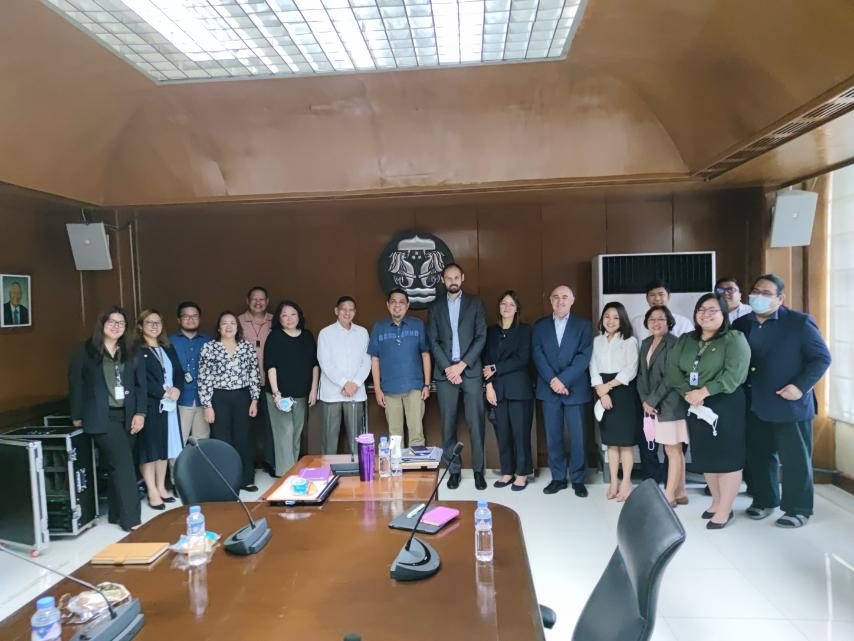Philippine Catastrophe Insurance Facility
The creation of an insurance facility for the aggregation of catastrophic risks written in the Philippines, to be able to increase capacity, more efficiently write such business, whilst ensuring its sustainability and being able to offer such cover to the more vulnerable sectors.
Description
As per Lloyd’s report from 2018, one of the underlying reasons for the low catastrophe insurance penetration is that the local insurance industry has an underwhelmingly inadequate financial capacity to retain catastrophe risks without borrowed capital in the form of overseas reinsurance. Namely, the annual expected losses from natural catastrophe perils – over USD 1.1B – are disproportionately vast compared to the insurance industry’s net worth of around USD 1.5B in 2018. In other words, the available capital in the industry is only around 1.3 times the annual expected loss. Other contributors to underinsurance include the low availability of affordable insurance cover, buyers’ low insurance awareness, and generally low trust to insurers.
To address these challenges, the Philippine Insurers and Reinsurers Association (PIRA), The Philippine Insurance Commission (IC) and National Reinsurance Corporation of the Philippines (NatRe) worked together to establish and rollout the Philippine Catastrophe Insurance Facility (PCIF), the first private sector focused disaster risk financing initiative of scale, allowing all insurers to pool their disaster risks and therefore benefit from efficiencies. The goal of the PCIF is to pool resources available in the country to keep most of the funds in the Philippines and enable non-life insurers to grow the premium base, which would then allow them to expand the range of catastrophe insurance products available to Filipinos.
The four main objectives of PCIF are:
1. Stronger Philippine non- life insurance industry
2. Higher insurance penetration
3. Adequate & sustainable catastrophe premiums
4. Increased local catastrophe retention
In the long-term, PCIF aims for sustainability of the products and availability to underserved portions of the insuring public.
Did the Sendai Framework change or contribute to changes in your activities/organization? If so, how?
This project contributes directly to the Sendai Framework for Disaster Risk Reduction and is one of the good practices for ARISE, the Private Sector Alliance for Disaster the Private Sector Alliance for Disaster Resilient Societies. The project addresses the ARISE commitments to raise awareness with respect to disaster risk and mobilization of private sector, share knowledge, experience and good practices amongst the private sector; be a catalyst for innovation and collaboration in developing risk-informed business strategies; and implement projects and activities to achieve the targets of the Sendai Framework.
What led you to make this commitment/initiative?
What was your position before making this Voluntary Commitment / prior to the Sendai Framework?
The Philippines faces some of the highest climate and disaster-related risks in the world. Despite having one of the most advanced microinsurance landscapes globally, the country has a relatively low penetration of climate and disaster risk insurance (CDRI).
Deliverables and Progress report
Deliverables
Deliverables are the end-products of the initiative/commitment, which can include issuance of publications or knowledge products, outcomes of workshops, training programs, videos, links, photographs, etc.
Creation and implementation of a hybrid Traditional but Micro indemnity-based product with a Parametric Component to address the needs of SMEs and the Residential Market.
This will be a property insurance product covering against catastrophe perils that has two parts, an indemnity-based part and a parametric part that would ensure an early pay out which is badly needed post disaster. The amounts to be covered remain small to be able to cater to the underserved portion of the population, however, it will be adjustable as it can be bought in small increments or units, up to a specified amount.
Creation and implementation of a facility to increase the capacity of the traditional catastrophe coverages.
This will redirect catastrophe risks written by the local industry into a facility that will share the pooled risks with participating companies. The facility enables insurers to cover more catastrophe risks, at the same time, allowing them to manage their exposures to catastrophes more effectively.
Organizations and focal points
Focal points
If a VC's contact information has been hidden, the SFVC team can forward a message.Partners
